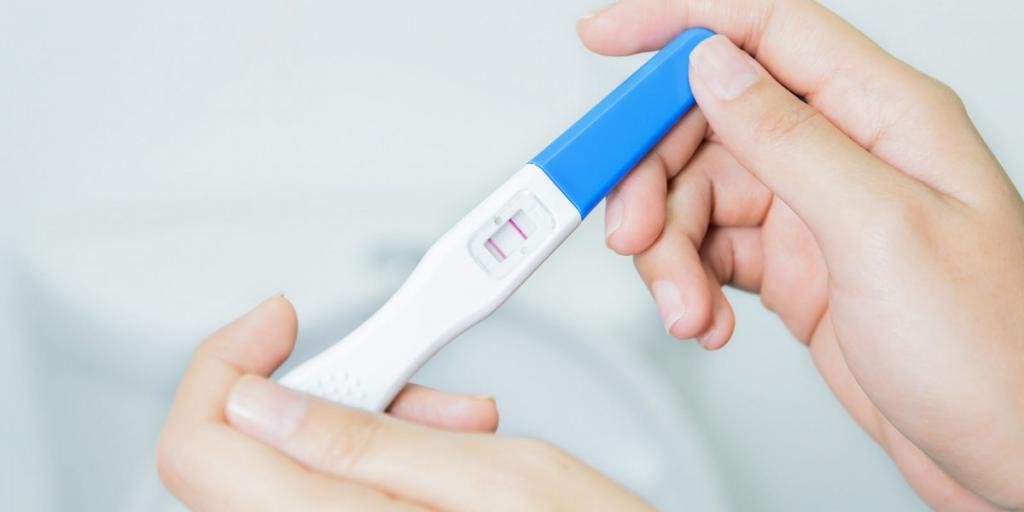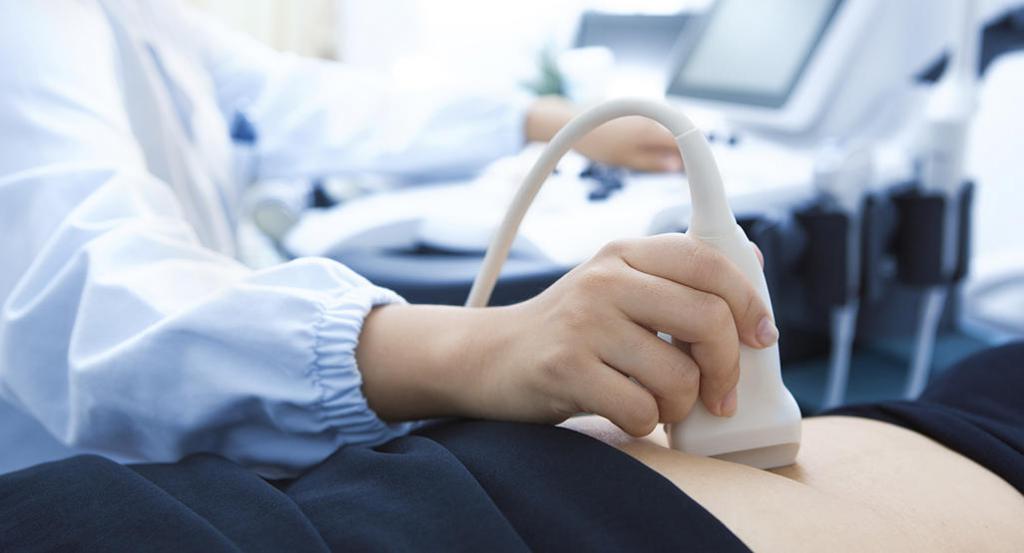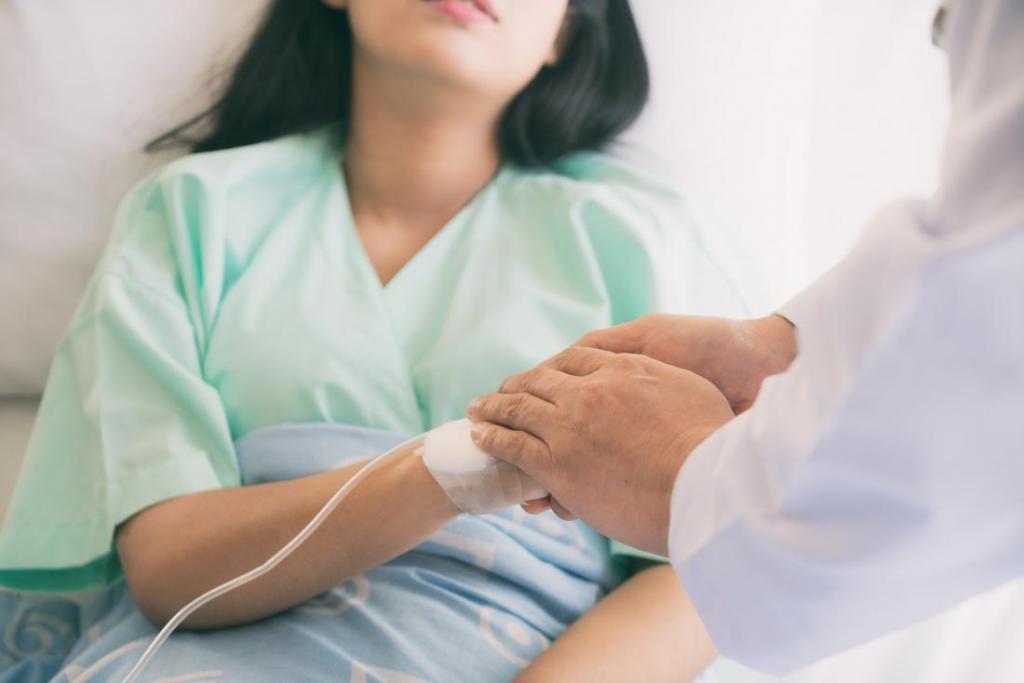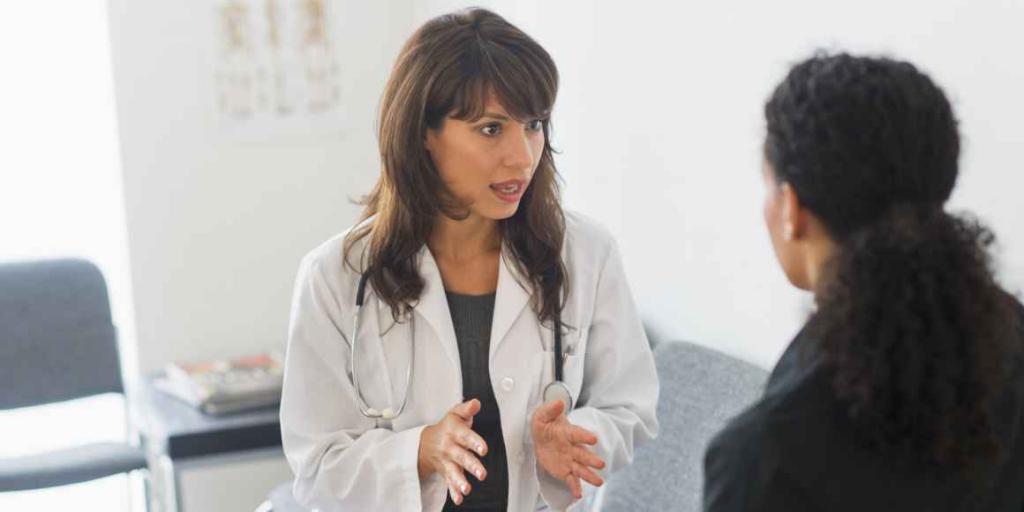Unpleasant sensations and pulling pains in the lower abdomen can have various causes. Most often, this kind of sensation accompanies women during menstruation, but what if menstruation did not arrive on time with the first pains? Is pregnancy possible with a delay of 1 day? Pulling the lower abdomen, white discharge and back pain are signs of various pathologies.

Pregnancy
Can there be a pregnancy: pulls the lower abdomen and a delay of 1 day? Abdominal pain, even during a delay, is not an accurate sign of pregnancy, but if at this point a woman began to have a sexual life, this possibility should not be ruled out. At home, pregnancy can be confirmed in the early stages exclusively with the help of a test. If the test is positive, the delay is 1 day, pulls the lower abdomen and lower back, this indicates an interesting situation.
The test is able to confirm pregnancy within a couple of days after fertilization, or up to two weeks if the concentration of hCG earlier was too low to detect. But if the pain continues, and the pregnancy has not been confirmed, it is necessary to consult a doctor without waiting for a positive result. A normal pregnancy in most cases is painless.

Ectopic pregnancy
In the early days, the signs of an ectopic pregnancy are very similar to the symptoms of a normal pregnancy. This is a delay, enlargement and sensitivity of the chest, poor health. Even a standard test can detect such a pregnancy, but in this case, the level of hCG in the blood and urine is an order of magnitude lower than during normal pregnancy. Signals that determine the pathology appear over time. If the delay is 1 day, pulls the lower abdomen as with menstruation, this may be just such a pathology.
Triad of classic symptoms for an ectopic pregnancy:
- lower abdominal pain;
- irregular bleeding or scarce;
- tumor in the uterine appendages (determined by the doctor).
The cause of this pathology is a too narrow passage of the fallopian tube or various disorders that lead to premature placement of the ovum.
If the wrong embryo is not eliminated in time, it becomes dangerous for the life and health of the woman. Without the intervention of doctors, the situation inevitably leads to severe internal bleeding. If bleeding has already occurred, it is important to immediately seek medical help from a doctor.
How to treat her?
Depending on the level of development of the embryo, the doctor may prescribe pharmacological or surgical treatment. If the fetal egg is less than 3 cm, there are no relative contraindications to the drugs, Methotrexate in the form of injections is attributed to the patient. Sometimes even a single injection is enough to remove the changes that have come. In other cases, of which the vast majority, the surgical method is prescribed - laparoscopy. The only contraindication to this kind of intervention is a hemorrhagic shock, which came from too much blood loss.

Ovarian cyst
Polycystic disease is the most common ovarian disease. A cyst is not a malignant neoplasm. These are not bursting follicles that are filled with liquid of different densities. They can change their size and increase depending on the amount of fluid accumulated in their cavity.
In most cases, they "pass" on their own without harming women's health. Nevertheless, in some cases, cysts can increase in size excessively and give complications in the form of inflammatory processes. It is these bubbles that cause a pain effect in the lower abdomen and can have an effect on the cycle.
If the doctor came to the conclusion that the appearance of such a cyst is due to a malfunction of the hormonal background, then he prescribes hormone therapy, as well as previously drug treatment to get rid of inflammation. The greatest danger is a cyst that has twisted. It is urgently removed by laparoscopy.

Miscarriage
Often, spontaneous abortions occur so that a woman may not even be aware of the existing fact of pregnancy. If there is a delay of 1 day, pulls the lower abdomen and back pain, then you should consult a gynecologist. Shortly after the delay and pulling pains, cramping pains and bleeding reminiscent of menstrual flow. If there is a suspicion that a miscarriage has occurred, you should soon consult a doctor to examine the uterine cavity, since particles of the ovum can remain inside. At the request of the woman, a full examination is carried out to establish the cause of rejection.
The cause may be infectious diseases or pathogenic bacteria that hit the embryo, as well as the presence of genetic abnormalities in the fetus. However, most often the problem is the lack of the female hormone progesterone, which allows the embryo to firmly establish itself in the uterus.

Ovarian apoplexy
Hemorrhage of a greater or lesser degree in the abdominal cavity caused by a rupture of the integrity of the ovarian tissue. Weakening of these tissues can occur against the background of a broken cyst, terminated pregnancy, inflammation of the appendages, varicose veins of the ovary, oophoritis, as well as trauma and strokes of the abdomen, strong physical exertion, and even tension associated with interruption of sexual intercourse. The risk of apoplexy increases with ovulation and before the onset of critical days.
With the mildest form of apoplexy, it is recommended:
- keep calm;
- take hemostatic drugs;
- antispasmodics;
- suppositories with belladonna;
- make cold compresses.
At the first signs of increased hemorrhage, surgical intervention is indicated.

Uterine fibroids
A benign tumor located in the wall of the uterus or its cervix. There is an assumption that the appearance of this formation is associated with increased secretion of the female hormone estrogen. This is proved by the fact that more often this disorder affects young women of reproductive age, and known cases of self-healing occurred after menopause.
It is not known for certain what causes fibroids, but doctors do not exclude from this list a genetic predisposition, past genital inflammation, abortion, diabetes mellitus, hormonal instability, overweight, a sedentary lifestyle, and more.
In the absence of severe symptoms for the treatment of uterine fibroids, non-surgical methods of treatment are first prescribed: drugs or focused ultrasound.

Uterine endometriosis
Pathological activity of endometrial cells - the inner layer of the uterine wall. Cells can grow into the muscle tissue of the uterus right up to the perimetry, and also form growths that cause pain in the lower abdomen. Unfortunately, the typical symptomatology, which is inherent only in endometriosis, does not exist. These symptoms may correspond to signs of other painful conditions, which complicates and delays the diagnosis in time.
A feature of the disease lies in its ability to spread easily and form new foci throughout the body. To date, medicine does not know the explanation for the occurrence of endometriosis.
Wandering endometrium is influenced by hormonal changes that occur throughout the menstrual cycle. Therefore, effective treatment with hormonal drugs is possible. If a disorder of adjacent organs is observed, this is a direct prerequisite for surgical intervention. Laparoscopy allows you to cauterize the affected areas.
Inflammation of the appendages
Genital infections are considered the main causative agent of inflammatory processes. The disease can occur both asymptomatically and with signs characteristic of pregnancy:
- aching pain in the lower abdomen;
- fever;
- nausea, delay.
These symptoms last for a week, and then go to the chronic stage, and later to peritonitis.
In order to avoid this severe form of inflammation, it is important to make a correct diagnosis in a timely manner. In this case, the most accurate method will be microbiological examination using laparoscopy.
The treatment course consists of the inclusion of anti-inflammatory and anesthetic drugs in combination with broad-spectrum antibiotics and a long half-life. In extremely advanced cases, the need arises to remove appendages. Surgical rehabilitation includes physiotherapy and immunostimulation to avoid adhesions.
Appendicitis
One of the most common disorders of the digestive tract and one of the most dangerous. The main threat of appendicitis is the unpredictability of the problem and the risk of the inevitability of exacerbating consequences (peritonitis, blood poisoning, deadly abscesses).
According to statistics, the likelihood of exacerbation of appendicitis is quite high and increases in people with a tendency to constipation, overeating, inadequate fiber intake, multiple infectious lesions (indirectly, weakened immunity). Not the last role is played by the hereditary factor. Pregnant women are also at increased risk due to squeezing the organ with the uterus.
In the catarrhal stage of appendicitis, the pain covers only the right lower abdomen, which may coincide with the expected day of the onset of menstruation and cause a slight delay. However, the duration of this condition is short (does not exceed 12 hours), and then it goes into the stage of acute inflammation. In the vast majority of such cases, doctors are forced to resort to an emergency surgical solution to the problem - laparoscopic appendectomy. Therefore, a delay of 1 day, pulls the lower abdomen and a headache - one of the signs of appendicitis.
Adhesive disease
A disease characterized by buildup of adhesions in the abdomen is sometimes the result of past illnesses or surgeries, such as complicated inflammation of the appendages or removal of appendicitis. At the beginning, the structure of all adhesions is friable, but in the end result it is even able to ossify. The severity of the disease determines the tactics of treatment. Both a surgical and a classic approach are possible for an acute and chronic form of adhesive disease.
The conservative method involves:
- prescribing antibiotics;
- hormone therapy (with endometriosis);
- the appointment of drugs that dissolve fibrin;
- the use of anti-inflammatory drugs;
- physiotherapy.
It is important for pain as soon as possible to visit a specialist.